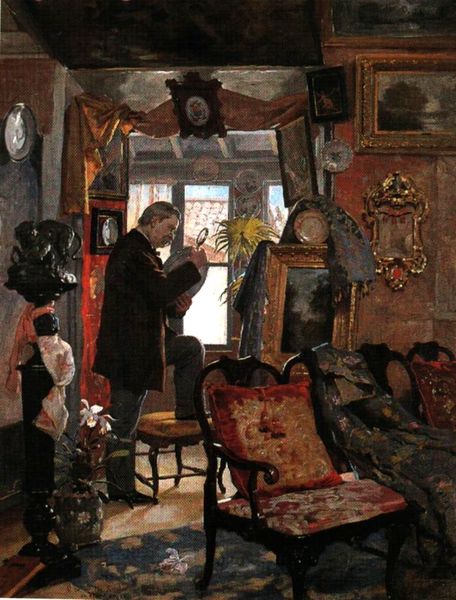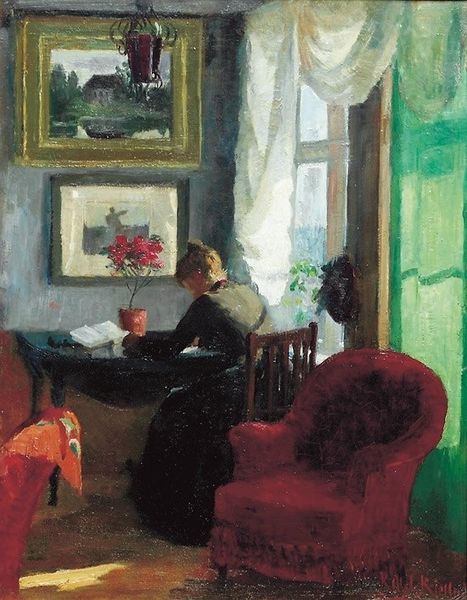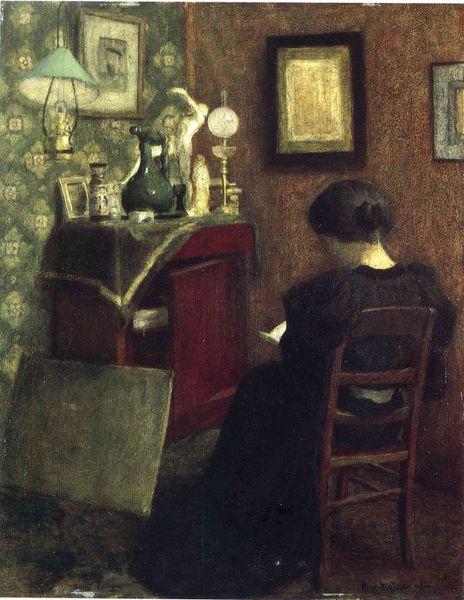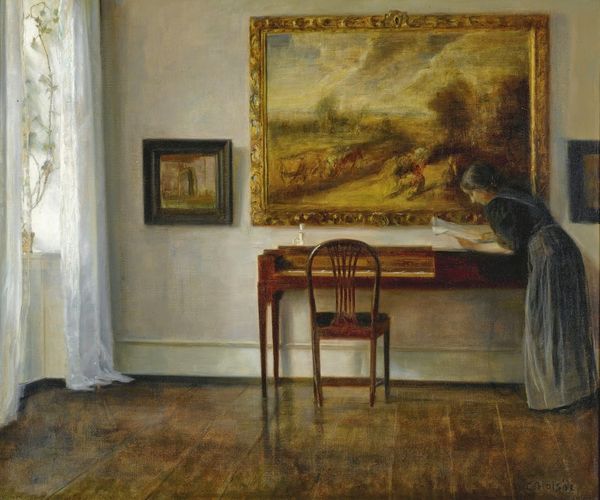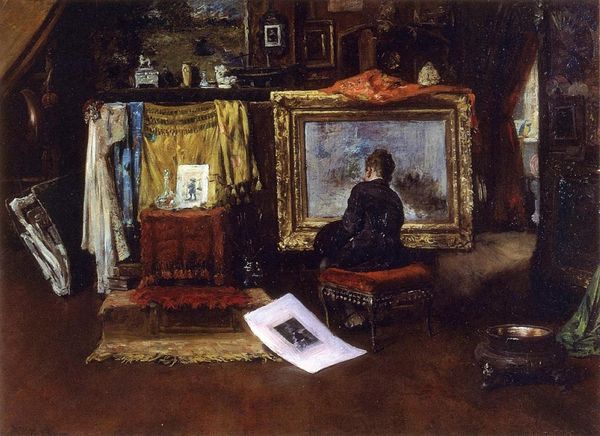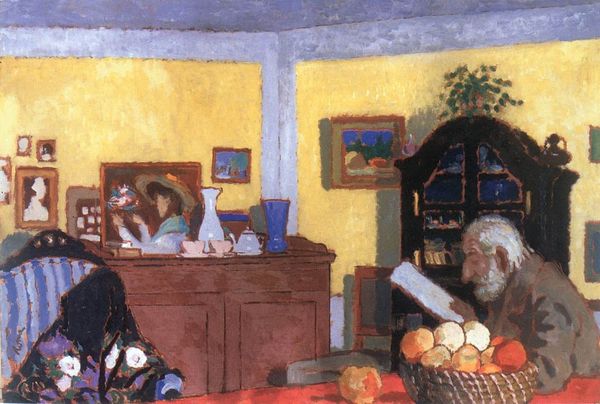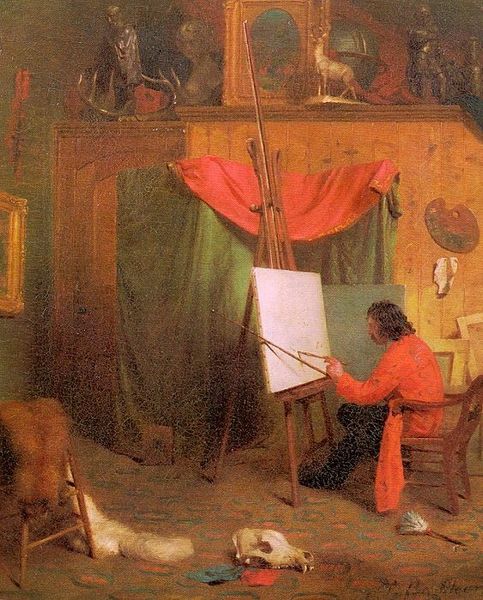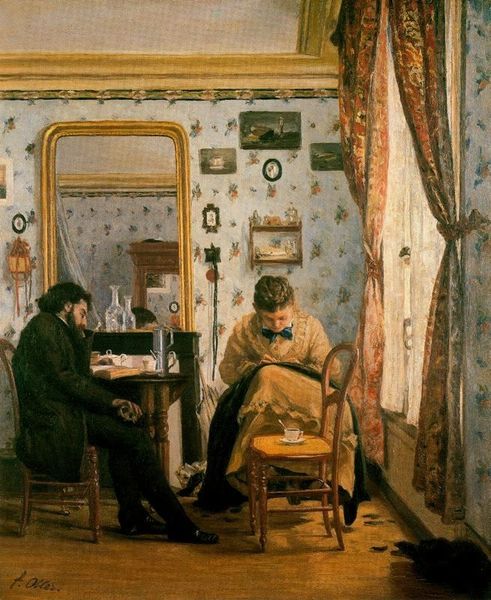
Copyright: Public domain
Editor: Here we have Eugène Jansson's "Vid Pianot" from 1886, an oil painting. I find it interesting how Jansson focuses on the geometry of the room, like the sharp rectangles of the paintings and the furniture, contrasted by the softness of the plant. What strikes you about the composition of this work? Curator: Indeed, the geometry dictates the image. The rigorous arrangement of rectangles – the paintings, the piano, even the fallen sheet music – these create a powerful structure. But observe how this structure is disrupted. The chair’s oval backrest echoes the spherical vase, undermining the rigid grid. Editor: So, you’re seeing a tension between order and a kind of... softness? Curator: Precisely. The limited palette—browns, greens, yellows—serves to unify these conflicting forms, creating visual harmony and modulating our gaze. Consider the perspective: the viewpoint seems almost compressed, forcing the planes closer together. Editor: I notice how the figure at the piano is turned away from us. What's the effect of that? Curator: By obscuring the pianist’s identity, Jansson directs our focus to the interplay of forms and the diffusion of light across the surfaces. What emotional resonance arises from this formal construction, this push and pull between the static and the organic? Editor: It’s contemplative, I think. The muted tones create a very intimate mood, drawing the viewer into the scene. I didn't notice those details at first, thanks for helping me examine that more closely. Curator: Formal analysis is not merely about dissecting the art; it is also about understanding its total presence as form, color and texture which is not easily grasped at first sight.
Comments
No comments
Be the first to comment and join the conversation on the ultimate creative platform.

